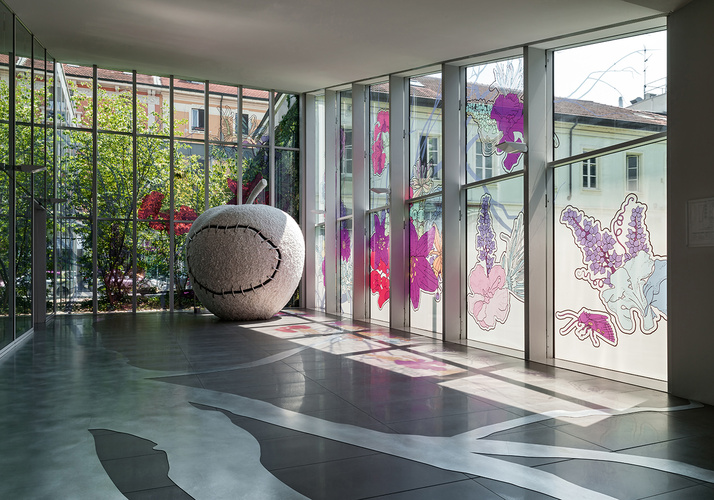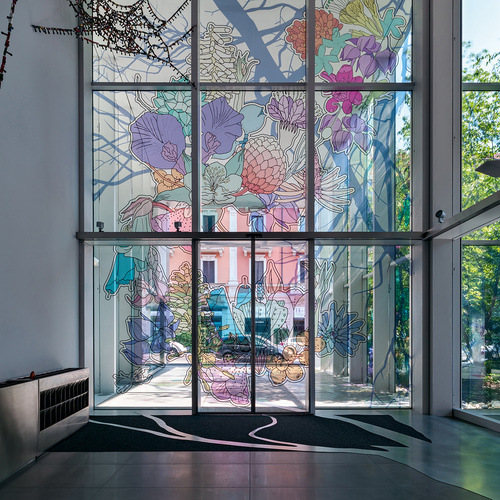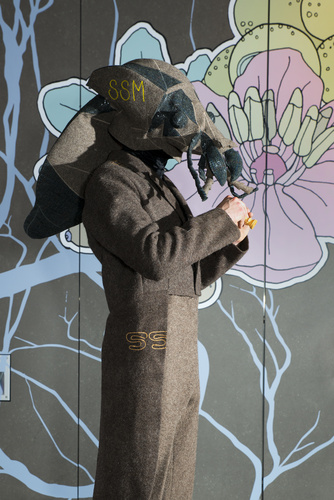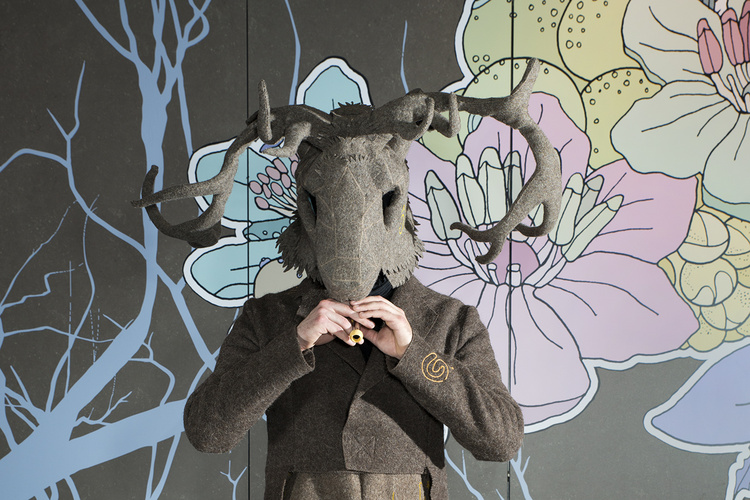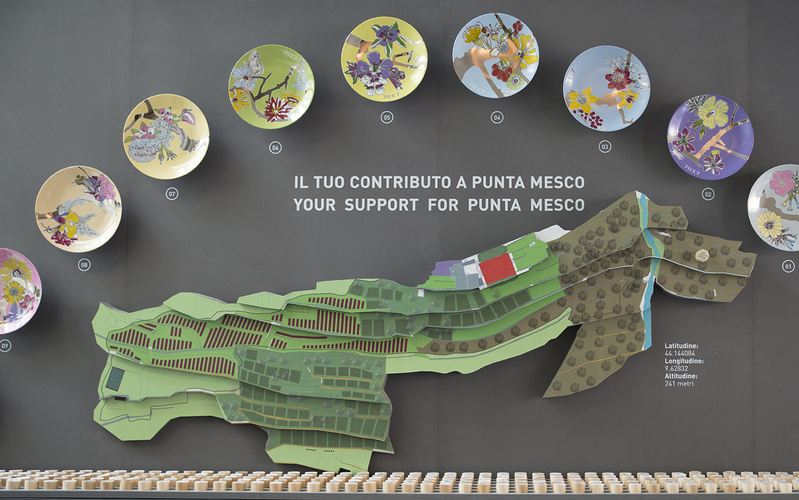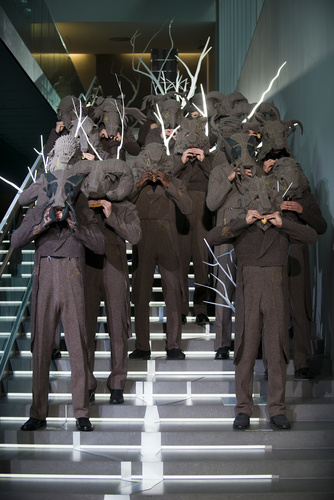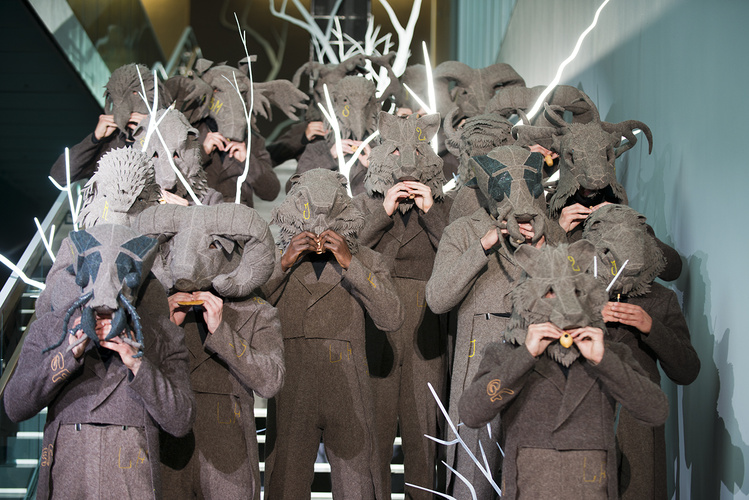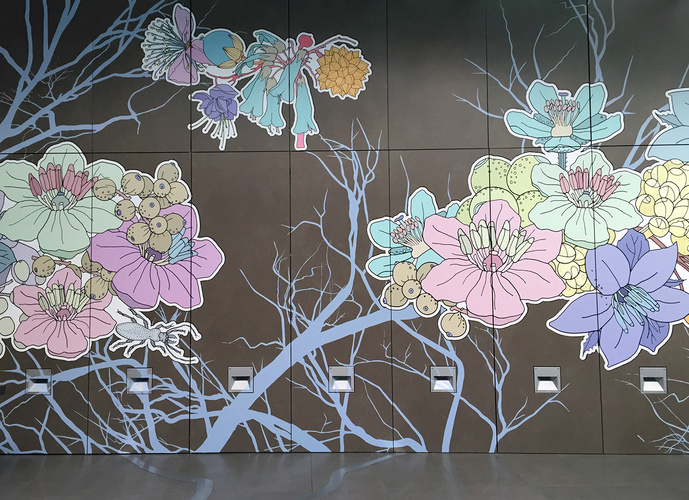70 x 7 The Meal Act XXXVII, Milan, 2015
Date:
2016
Matériaux:
Installation of wall drawings (In situ), Royal Limoges porcelain plates (Ten different editions of Ed. 50) and the performance Symphony for Absent Wildlife
Catalogued:
Fabulae Naturae, ed. ZegnaArt, Marsilio, 2015, pp. I-XVI
Courtesy:
ZegnArt and Lucy + Jorge Orta
To coincide with the Expo Milan 2015, the ZegnArt contemporary art foundation invited Lucy + Jorge Orta to create Fabulae Naturae, an installation involving sound, performance and food, transforming the Ermenegildo Zegna Global Headquarters in Milan into an immersive environment. Set within the architecture designed by Antonio Citterio, the artists imagined an Amazonian rain forest-scape comprised of immense wall drawings of imaginary species invented by the artists, after their expedition to the Amazon in 2009. Within the setting, the performance Symphony of Absent Wildlife and Act thirty-seven of 70 x 7 The Meal were presented.
Entering into the imaginary rain-forest, guests were guided by a life-size tree floor drawing, whose branches led to different food-tasting stations, here the star chef Davide Oldani served a selection of sustainable dishes. The ten editions of Royal Limoges porcelain plates Lucy + Jorge Orta designed reiterated the motifs of the Amazonia murals and was available for sale to support the regeneration of the Punta Mesco area in Italy. For each edition sold, a row of vines was planted bearing the name of its ‘owner’ in this natural agricultural reserve. At intervals throughout the evening, Symphony for Absent Wildlife, a performance for twenty masked-musicians, intensified the feeling of stepping into a fairy tale world inhabited by fictional creatures of the forest. The performance sound-scape plays on the dichotomy between a ‘false’ orchestra of flutists acting in a symphony for nature, and a ‘true’ orchestra consisting of the sound of the bird whistles. The musicians’ tailcoats and masks in the form of a woodland creatures are sculpted from reclaimed felt blankets, making reference to the raw material used by Joseph Beuys to connect spiritual and ecological issues.
